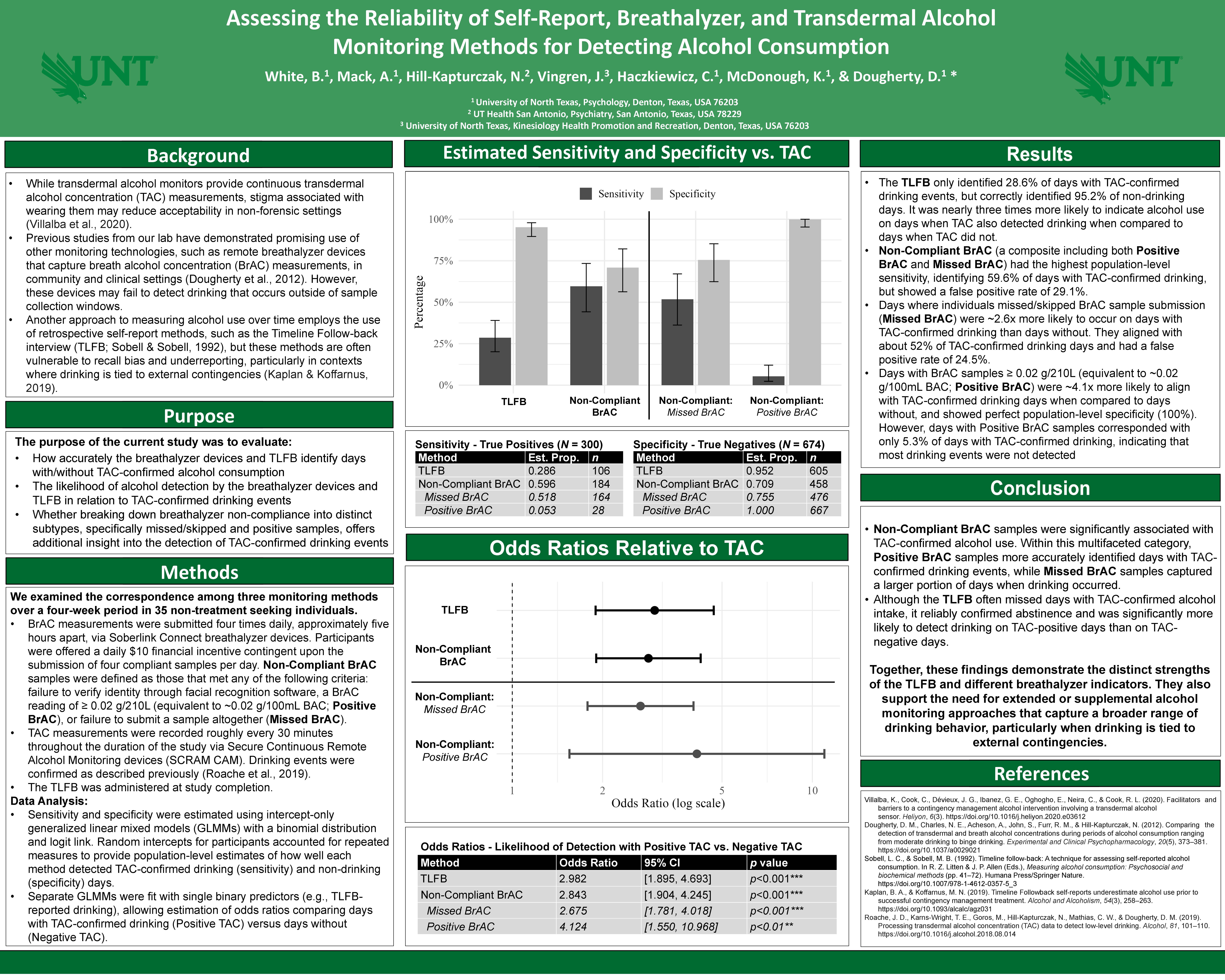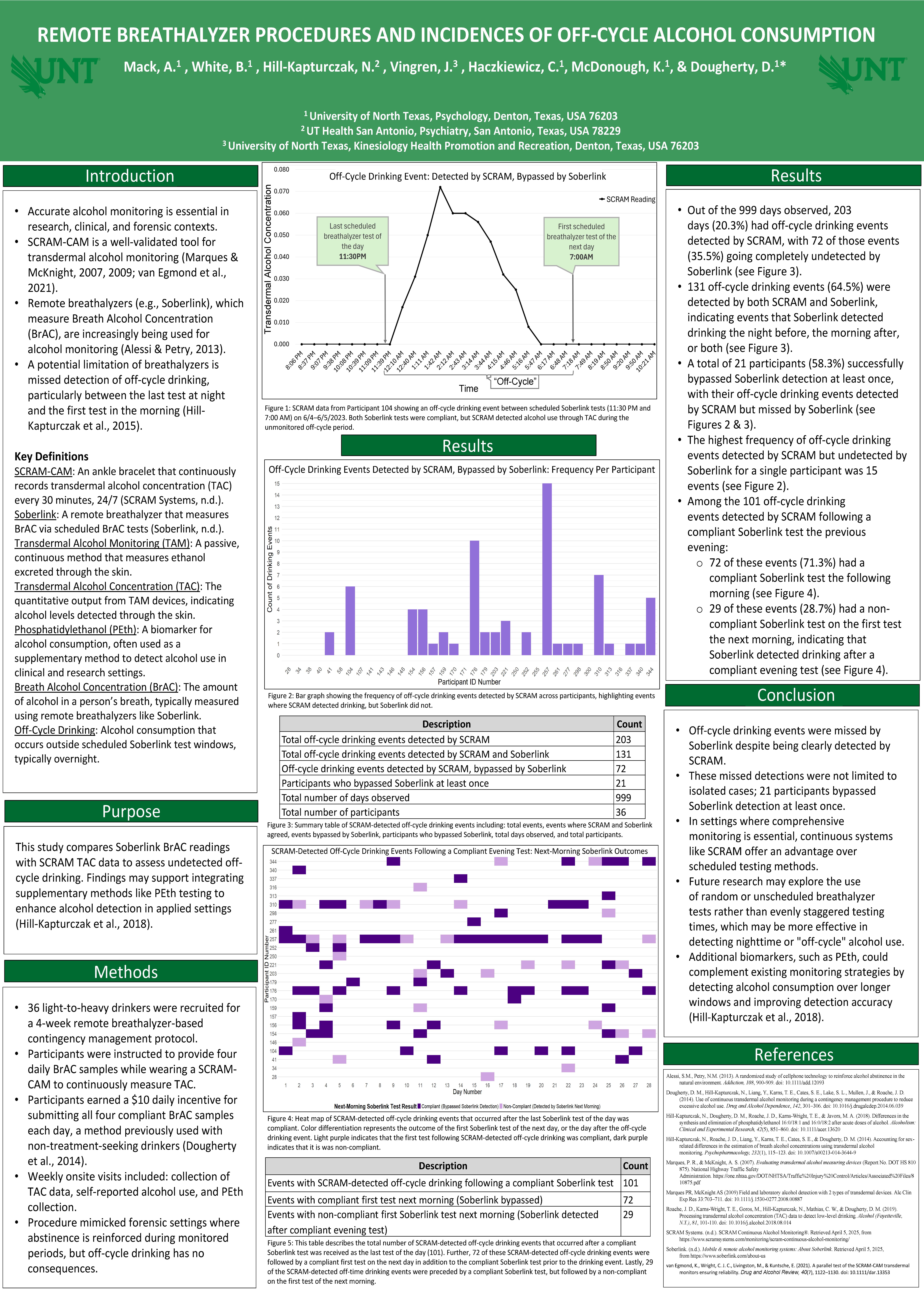- Undergraduate
- Graduate
- Back
- Graduate
-
- Apply Online Now
- Behavioral Science
- Clinical Science
- Counseling Psychology
- Graduate Coordinator's Virtual Office
- Graduate Student Feedback
- Graduate Association of Students in Psychology (GASP)
- Psychology Advocates for Social Change (PASC)
- The UNT Association of Black Psychologists Student Circle Chapter
- Scholarships & Awards
- People
- Clinics and Centers
- Donate
- Hiring
- TUNTABPsi
-
- Back
- Graduate
-
- Apply Online Now
- Behavioral Science
- Clinical Science
- Counseling Psychology
- Graduate Coordinator's Virtual Office
- Graduate Student Feedback
- Graduate Association of Students in Psychology (GASP)
- Psychology Advocates for Social Change (PASC)
- The UNT Association of Black Psychologists Student Circle Chapter
- People
- Donate
- Hiring
- TUNTABPsi
- Search:
-
- Quicklinks:
Current Research

Brooke White, Andrea Mack, Nathalie Hill-Kapturczak, Jakob Vingren, Christian Haczkiewicz, Katy McDonough, & Donald Dougherty*
2025, Texas Research Society on Alcoholism Annual Scientific Meeting

Andrea Mack, Brooke White, Nathalie Hill-Kapturczak, Jakob Vingren, Christian Haczkiewicz, Katy McDonough, & Donald Dougherty*
2025, Texas Research Society on Alcoholism Annual Scientific Meeting